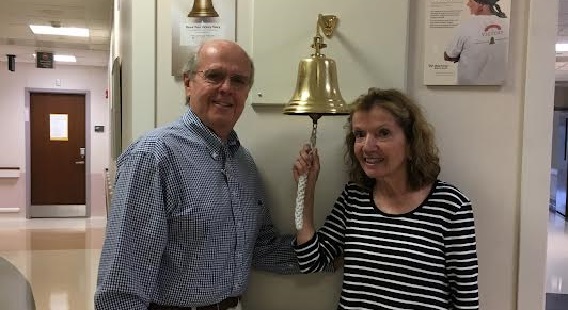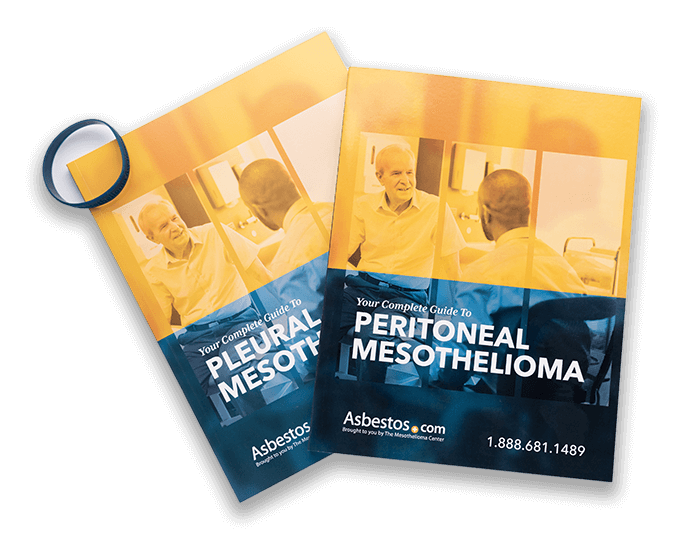Mesothelioma Survivor Discusses Her Asbestos Exposure


Fact Checked | Written by: Travis Rodgers | Last Update: 10/24/2024
As Susan Dickman reflects on 12 years of survival, she says she is cancer free and in good health. She notes there were several ways she was likely exposed to asbestos.
Her first exposure experience was likely through her father. Secondary asbestos exposure can happen when people like Susan’s father who work with or around asbestos inadvertently bring the dangerous fibers home on their clothing, skin or hair.
“My dad worked in the boat business. He worked for a company that built large yachts,” Susan recounts. “During WW2 the company – Fisher Boat Works in Detroit, Michigan – was building PT boats for the war effort and shipped them to Norway.”
Shipyards were high-risk exposure sites. Asbestos was used throughout military vessels. Even though it wasn’t specifically part of her father’s job description, Susan says he would take time every day to get involved firsthand with the shipbuilding process.
Susan explains, “Once he was finished with his work as a CPA for the company, he would put on his jumpsuit and help out in whatever way he could.”
This put Susan’s father at risk of primary asbestos exposure. His family and anyone in close contact with him was at risk of secondhand exposure.
“He would come home from work with the jumpsuit on,” Susan shares. “I remember him parking in the garage and my sister and I running up to hug him. He would pick us up with the jumpsuit on. Of course it had asbestos on it.”
Instances of Possible Primary Asbestos Exposure
Susan attended college in South Bend Indiana where she believes she was exposed to asbestos firsthand. There were tunnels that stretched across the campus to allow students and staff to walk from one building to another while avoiding the severe winter weather.
“I remember these big heating tubes going through the tunnels on the ceiling and I remember white material floating down many times and then it was on the ground,” Susan recalls. “We were 17 years old kicking what we thought were feathers at the time, but it was asbestos.”
Asbestos was used as insulation in most buildings constructed between 1930 and 1980. It was used in a variety of ways, especially around pipes, for its heat resistant properties.
Susan may also have also encountered asbestos while working in a dentist’s office to put herself through college. Asbestos was used in the production of dental prostheses, dental dressings and other equipment in the 1960s and 1970s.
Susan’s Asbestos Exposure Led to Her Mesothelioma Diagnosis
Asbestos exposure is the primary cause of mesothelioma. Repeated exposure can increase your chances of developing the aggressive cancer.
Secondary exposure to asbestos can be just as dangerous as primary exposure. Breathing in or ingesting asbestos fibers can cause inflammation and scarring of the lungs.
Mesothelioma’s latency period can range from 20 to 60 years after initial exposure to when a person is diagnosed with mesothelioma. Susan was diagnosed at 72 years old.
Doctors were apprehensive about recommending intense surgery, citing her age as a risk factor. However, Susan found a doctor open to performing her cytoreductive surgery and HIPEC. Her surgery was a success and Susan is glad she made the decision to have the procedure.
Susan Shares Her Faith in the Power of Prayer
Susan says her faith played a major role during her recovery time. Susan shares that the power of prayer is something she fully believes in.
“It was a time in my life when I felt the presence of prayer and what prayer was doing,” Susan tells us. “I felt the community so unbelievably well and I knew they were praying for me. I could feel their prayers around me.”
She adds her community came together to help in many ways. “We lived in a wonderful area where people would bring us food,” Susan says.
Her faith in prayer and community has particularly helped her as she mourned the loss of the person she credits with being her biggest supporter and help during her recovery. Her husband Wes died of lymphoma.
“He was a huge help. He was very protective,” Susan tells us. “He exercised with me. He helped me walk.”
Wes was her full-time caregiver. She also shares Wes was firm in protecting the time and space she needed to heal.
Susan explains, “Wes had put up a note on the door that read ‘Please call before you come.’ I had too much company and I was getting tired, but I was trying to be polite. So he would protect me that way too.”






